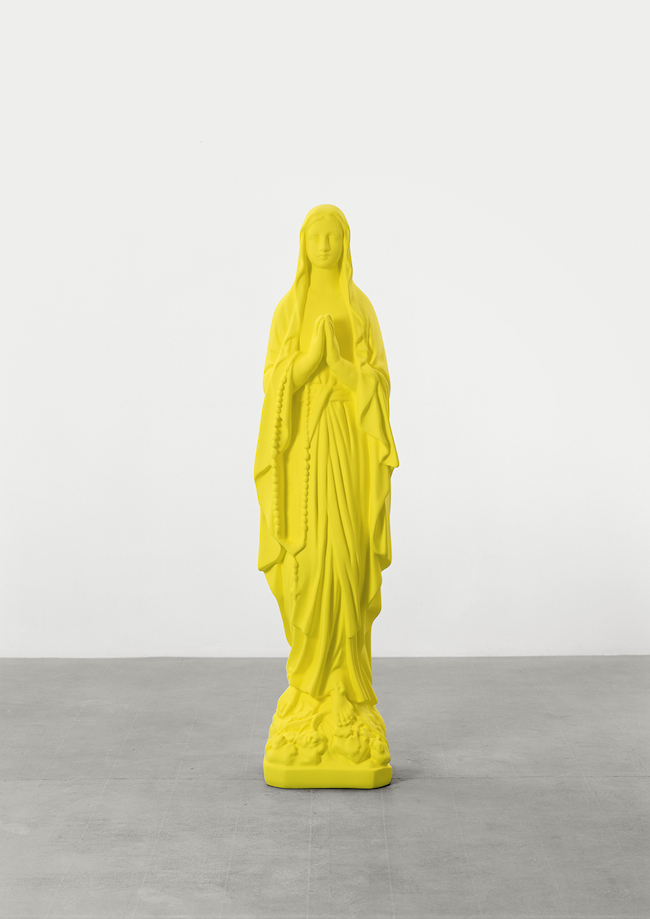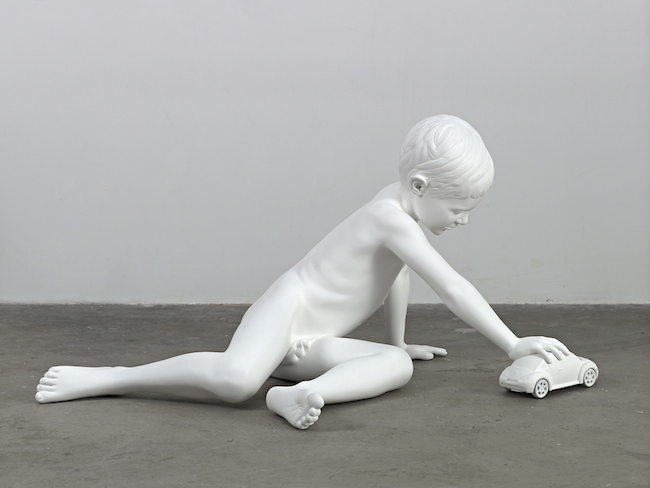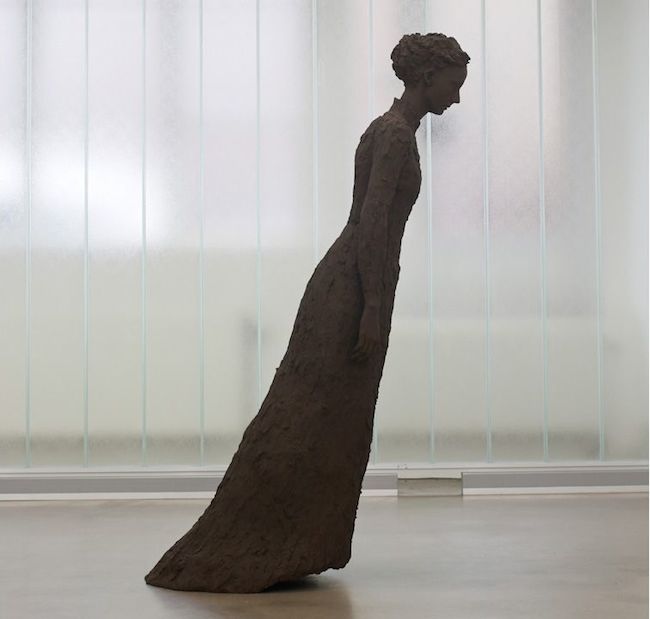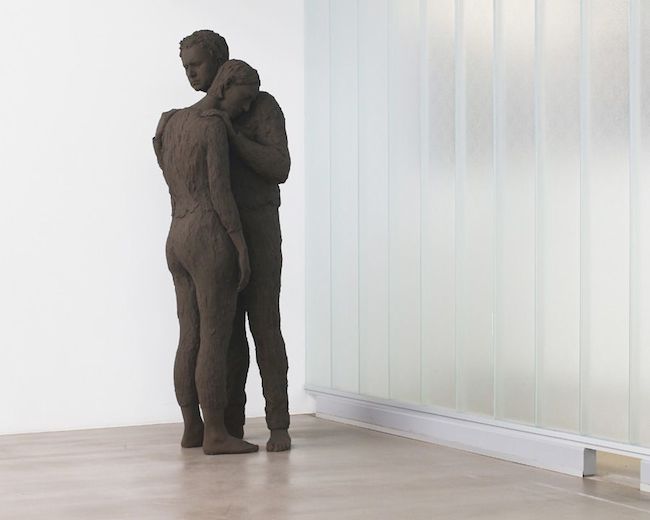
Two Sculpture Shows in Stockholm
20/10/2014
“Sculpture after sculpture”
Moderna Museet, Stockholm
Until 18 January, 2015
Lars Nilsson
Galleri Andersson/Sandström, Stockholm
Until 8 November, 2014
In a novel by this year´s Nobel laureate Patrick Modiano, a young women catches sight of a person that looks like her mother, who supposedly died a long time ago. The other woman is wearing a yellow coat, and that coloured detail is the beginning of a painful journey backwards in time.
I came to think of this passage when visiting Moderna Museet´s newly opened exhibition Sculpture after Sculpture, including works by Katharina Frisch, Jeff Koons and Charles Ray. There I saw Frisch´s Madonnenfigur (1987/2009), which is a replica of a typical Madonna that you can buy in any tourist shop. Only, it´s enlarged to human size and totally clad in yellow paint. Here, placed in the centre of the open room, the luminous object is of course immediately visible – as are all the other of the thirteen sculptures that are included in this astoundingly beautiful exhibition. But Frisch initially made the piece for Skulptur Projekte in Münster, where it stood outdoors on a public square. There, in the midst of the crowd, I imagine that from a distance you would immediately recognize it, like the girl does in Modiano´s text.

Katharina Fritsch. Madonnenfigur / Madonna, 1987. © Katharina Fritsch/BUS 2014
Now, when all the hoopla around Jeff Koons has died down, hopefully Frisch´s sculptures will be visible again? Because her work is worth a lot more attention than the hyped Koons´– and the same goes for Charles Ray. Both Ray and Fritsch, although artists with a big international reputation, seems to be much more in contact with the art works themselves. They´re investigating something with great care, whereas Koons is more preoccupied with his logo. The art, in his case, becomes a by-product.

Charles Ray. The New Beetle, 2006. © Charles Ray. Photo: Joshua White
What is at stake at Moderna is to position the museum in the art world, which of course is a big achievement, and one that could turn out essential in order to get important pieces of art for future shows. But it´s also about writing another chapter in the museum´s own history. Since the ´60s Moderna Museet is closely connected with the legacy of Warhol and Duchamp, so the present exhibition comes as a given. All three of the artists are born and bred with Pop Art and the Readymade.
Jeff Koons. Metallic Venus, 2010–12. © Jeff Koons
The exhibition brings out both their differences and similarities. They all work with figuration, form and scale – following, of course, a long lived tradition; Fritsch in a sort of fairy-tale setting which can be both sweet and sinister; Ray in connection with the importance of detail and in a sometimes surprising spectrum of topics, including old tractors and dead trees; Koons in picking out common objects turning them into fetishes. All three are deeply involved in the surface of their objects, which can turn out both dry and matte (Fritsch), immaculately shiny (Koons), or industrial and metallic (Ray). The method to appropriate everyday items may not be new at all, but to see the in-depth craftsmanship, the fabrication and magnification of these well known objects is a one-off opportunity, at least by Swedish standards.
The real surplus of the exhibition, though, is that it gives the sculptures room to interact with the viewer, with each other and with the space itself. It creates an air of freedom, even sophistication in a non-excluding way, and opens for both detailed observation and astounding vistas.

Lars Nilsson. Damen i Svart, 2014. 192 x 52 x 123 cm, Composite, ed.3
An ongoing gallery exhibition with new works by the Swedish artist Lars Nilsson gets the figurative sculpture at Moderna Museet into perspective. Nilsson´s pieces feel both contemporary and old school. Those who have followed his career know that he often challenges the viewer by works that, at least, could not be called conventional. A sexual, or even voyeuristic, tension can often be found in them. Therefore it´s interesting to see that he in his new pieces are working more in regard to tradition. Nilsson´s both rough and skilfully modelled shapes are covered in a dry, dark brown shell that gives off a discreet smell. The modelled figures have the look of clay, but are actually casted in composite, which has a more neutral, almost drained feel to it. In line with the idea of the objects portraying – or perhaps even being – ghosts, the material itself plays an important part, and really sets the stage for the exhibition.

Lars Nilsson. Tillbaka, 2014. 174 x 50 x 60 cm, Composite, ed.3
A couple of male figures are emerging from the ground, another one is standing up but with the torso excavated, a young couple hold on to each other in despair, a ghostlike figure seems to float on the floor. Of great significance are the faces of the figures and their eyes in particular, which are glazed and reflect the light. As if they are being exposed in a delicate state after death but before begin reborn. And in connection to the ready-mades of the three artists discussed above, Nilsson is using already existing material, namely the images of writer and illustrator Edward Gorey. In a rather fantastic way his characteristic style come to life in a new form.